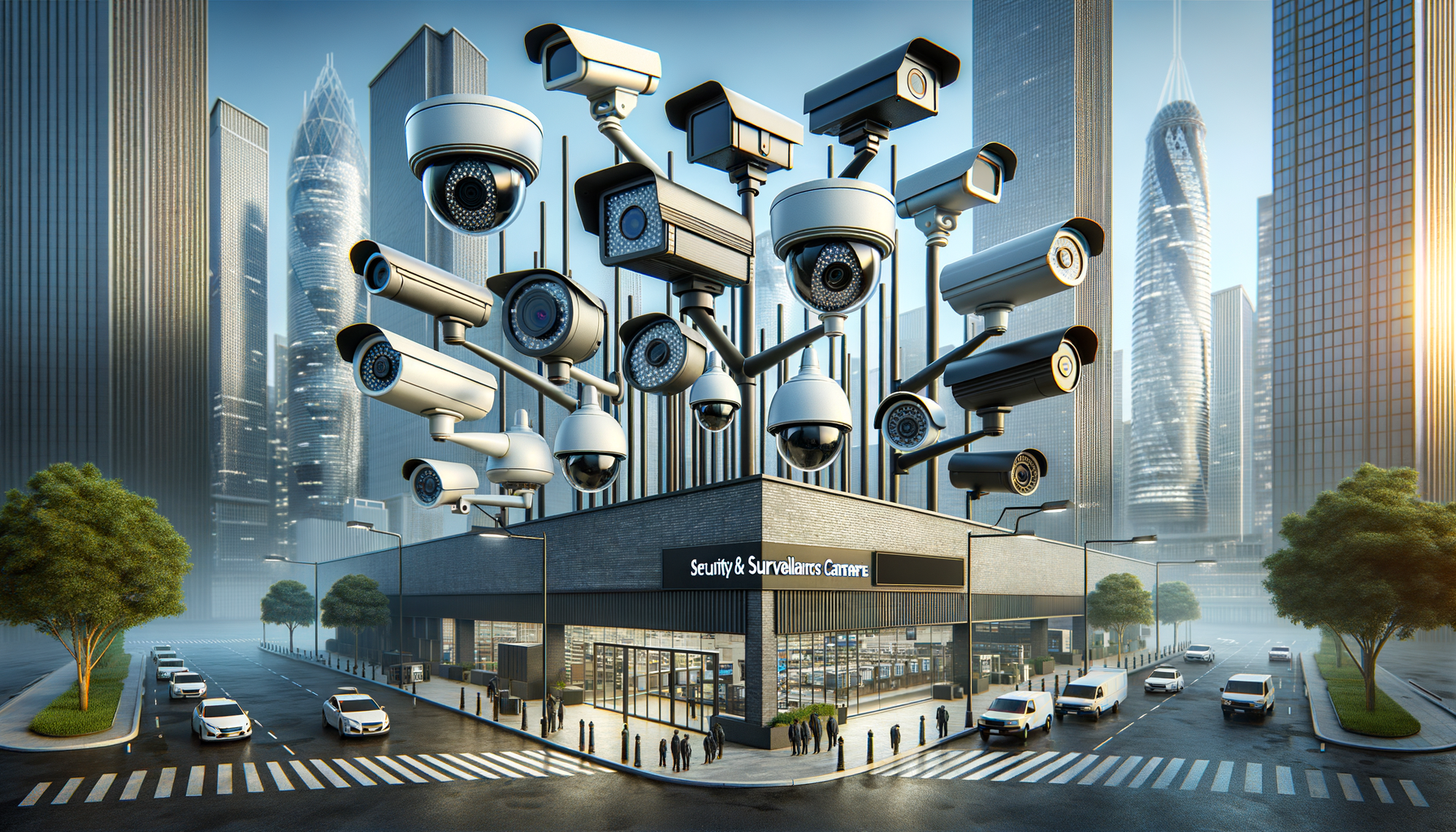Enhancing Safety: A Comprehensive Guide to Security & Surveillance Cameras
Security cameras play a crucial role in modern safety strategies, offering peace of mind and protection for homes and businesses alike.

The Growing Importance of Security Cameras
In today’s world, security cameras have become an integral part of safeguarding both residential and commercial properties. With the rise in crime rates and the increasing need for security, these devices offer a sense of safety and deterrence. The presence of surveillance cameras can significantly reduce the likelihood of criminal activities, as they act as a visible deterrent to potential intruders. Moreover, they provide invaluable evidence in the event of an incident, aiding law enforcement and insurance claims.
Security cameras are not just about preventing crime; they also offer peace of mind. For businesses, they ensure that operations run smoothly by monitoring employee activities and preventing internal theft. For homeowners, they provide a way to keep an eye on properties remotely, ensuring that everything is in order even when they’re away. In essence, security cameras are a proactive measure in a comprehensive security strategy.
Furthermore, the advancement in technology has made security cameras more accessible and affordable. With the introduction of wireless and smart cameras, users can now monitor their properties in real-time from their smartphones or computers. This convenience and accessibility have further contributed to the growing adoption of security cameras worldwide.
Types of Security Cameras
The world of security cameras is vast, with various types designed to meet different needs. Understanding the options available can help in selecting the right camera for specific requirements. Here are some common types:
- Bullet Cameras: These are long and cylindrical, ideal for outdoor use due to their ability to cover long distances.
- Dome Cameras: Known for their discreet design, they are typically used indoors and offer a wide field of view.
- PTZ Cameras: PTZ stands for pan, tilt, and zoom. These cameras can be controlled remotely to cover large areas.
- Wireless Cameras: Easy to install, they offer flexibility in placement and are often used in smart home setups.
- Infrared Cameras: Equipped with night vision, these cameras are perfect for low-light conditions.
Each type of camera has its unique features and benefits, making them suitable for different environments and purposes. For instance, bullet cameras are excellent for monitoring long driveways, while dome cameras are perfect for retail stores due to their wide coverage.
Key Features to Consider
When selecting a security camera, several features should be considered to ensure it meets your needs. Here are some critical aspects to evaluate:
- Resolution: Higher resolution cameras provide clearer images, which can be crucial for identifying faces or license plates.
- Field of View: This determines how much area the camera can cover. A wider field of view means fewer cameras are needed to cover a large area.
- Night Vision: Essential for monitoring in low-light conditions, night vision capabilities can vary significantly between models.
- Connectivity: Consider whether a wired or wireless setup is more suitable for your environment.
- Storage Options: Cameras can store footage locally on a DVR or NVR, or use cloud storage for remote access.
Choosing the right features depends on the specific requirements of your property and the level of security desired. For instance, a small retail store may prioritize high-resolution and wide field of view, while a homeowner might focus on wireless connectivity and night vision.
Installation and Maintenance Tips
Proper installation and maintenance of security cameras are crucial to ensure they function effectively. Here are some tips to consider:
- Placement: Install cameras at entry points and high-traffic areas to maximize coverage.
- Height: Position cameras high enough to avoid tampering but low enough to capture useful footage.
- Weatherproofing: Ensure outdoor cameras are weatherproof to withstand environmental conditions.
- Regular Checks: Periodically check camera feeds and connections to ensure they are functioning correctly.
- Software Updates: Keep the camera software updated to benefit from the latest security patches and features.
Proper installation can significantly enhance the effectiveness of security cameras, while regular maintenance ensures longevity and reliability. For those unsure about installation, professional services are available to guarantee optimal setup.
Future Trends in Surveillance Technology
The field of surveillance technology is continually evolving, with new innovations enhancing the capabilities of security cameras. Here are some future trends to watch:
- AI and Machine Learning: Cameras are increasingly incorporating AI to identify unusual activities and alert users in real-time.
- Integration with Smart Home Systems: Security cameras are becoming part of broader smart home ecosystems, allowing seamless control and monitoring.
- Improved Data Analytics: Enhanced analytics provide deeper insights into security footage, aiding in better decision-making.
- Increased Use of Cloud Storage: More cameras are adopting cloud storage solutions for easier access and management of footage.
- Enhanced Cybersecurity Measures: As cameras become more connected, cybersecurity is a growing focus to protect against hacking.
These trends indicate a promising future for surveillance technology, offering more efficient and intelligent security solutions. As technology advances, security cameras will continue to play a vital role in ensuring safety and peace of mind.